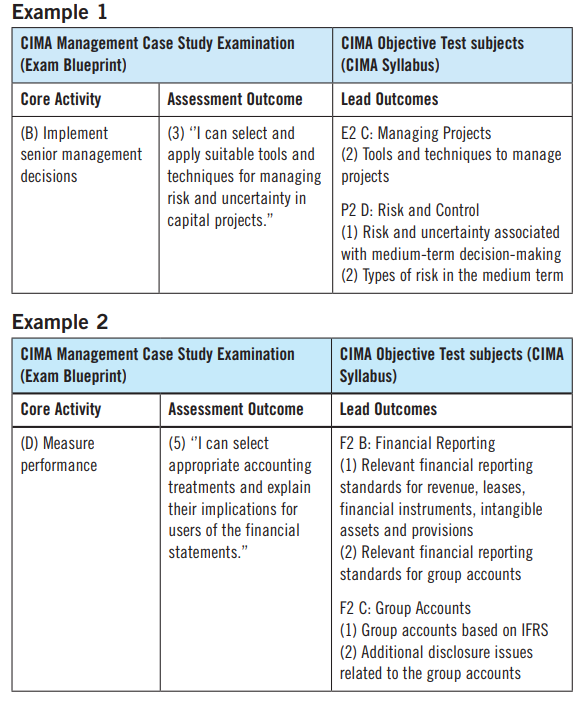September 2021
This is one of the most common questions asked by CIMA students, says Clancy Peiris, who suggests the best ways of going about it.
The CIMA Case Study exam, which students take at the end of each level of the CIMA qualification, is a business simulation of real-life job tasks that a finance professional at that level is expected to perform. The purpose of the exam is to assess the candidate’s proficiency in those specific skills that are less likely to be automated.
The Case Study exam tests the knowledge, skills and techniques across the three pillars (Objective Tests) within one synoptic scenario. Candidates are given a fictional Case Study, more commonly known as the pre-seen material, before the exam and are expected to give solutions, based on the knowledge and skills acquired from the three pillars, to the situations and challenges presented within the exam.
In my PQ magazine article ‘What the examiner wants’, published in August 2021, I talked about the critical success factors to pass your CIMA Case Study exams, I also mentioned that the best place to start preparing for these exams is to look at the CIMA exam blueprints. Let me explain further.
The exam blueprints set out in detail what is examinable (not what will be examined!) in the CIMA Case Study exams for each level of the CIMA professional qualification. They also provide information about the format, structure and weightings of the assessments. More importantly, they perfectly complement the professional qualification syllabus and give specific details on the different types of assessment.
The CIMA exam blueprints will help you prepare for your Case Study exams as they include all the competencies, skills and knowledge necessary to pass the exam at each level. You should also remember that examiners use the exam blueprints to develop exam questions and tasks.
In other words, the exam blueprints contain all potential tasks and question requirements for the Case Study exams – it tells you what to prepare for and how to prepare for it. If you think I’m exaggerating, I’d suggest you read any of the published ‘Full Post Exam Materials’ documents in the CIMA Planner, and see how the examiner maps the core activity examined in each exam task and sub-task in the marking guide to the blueprint.
“Ensure that you have the technical knowledge and understanding of all topics included in each of the core activities. It is not sufficient to rely on the fact that you remember it from the Objective Test exams, because the chances are you won’t. You need to revise technical material: if you don’t have the knowledge, you can’t possibly score well.’’
CIMA EXAMINER
Core activities and assessment outcomes outlined in the exam blueprints are extremely important to successfully prepare for your Case Study exam and highlight what you need to revise – don’t think that you will be able to pass solely based on what you remember from sitting your Objective Tests. Core activities are business-related tasks that are common to the role being simulated and valued by employers and which, if performed satisfactorily, enable you to demonstrate that you have the required competencies and mindset for that level.
Assessment outcomes clearly state what a CIMA qualified finance professional can do once they have been successful in their CIMA Case Study exam.
It’s worth stressing again that the assessment outcomes for the Case Study exams are synoptic. That means that each Case Study exam integrates the knowledge, skills and techniques from across the three pillars into one synoptic capstone examination. So working in tandem with the syllabus for the three pillars, core activities and assessments outcomes outlined in the exam blueprints, will help you in anticipating and preparing the type of questions you can expect to get in the exam. See the two examples I’ve provided below.

Doing this it will help you ensure that your knowledge base is complete. Knowledge of all areas of the syllabus is very important for success. Lack of technical knowledge in one or two areas, is one of the main reasons students don’t pass their Case Study exams.
“Revise study materials
CIMA EXAMINER
thoroughly. Candidates should
study all areas of the syllabus
and ensure that all three
pillars are covered. It is risky
to skip topics, even if they are
difficult.’’
If you have knowledge gaps, you won’t be able to apply your technical knowledge to the real-life business scenario presented in the Case Study exam, and you’re more likely to fail. This is particularly important of you have been awarded exemptions or have entered CIMA via a “pathway”.
The CIMA exam blueprints are our most comprehensive exam documents to date and, if you want to successfully pass your exams, you should make the most of them.
• Clancy Peiris, Senior Learning Development Manager, Association of International Certified Professional Accountants, representing AICPA & CIMA




